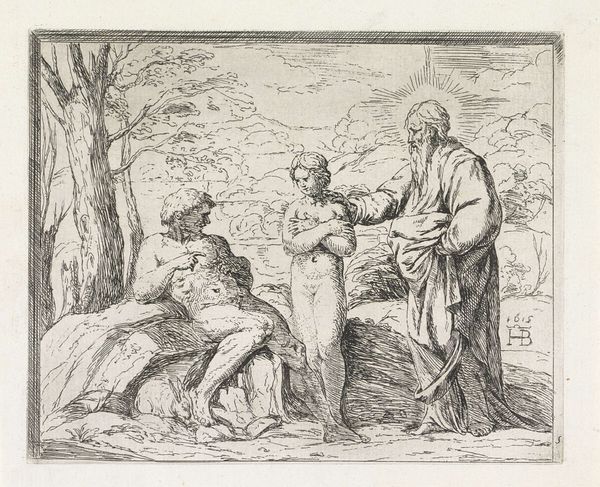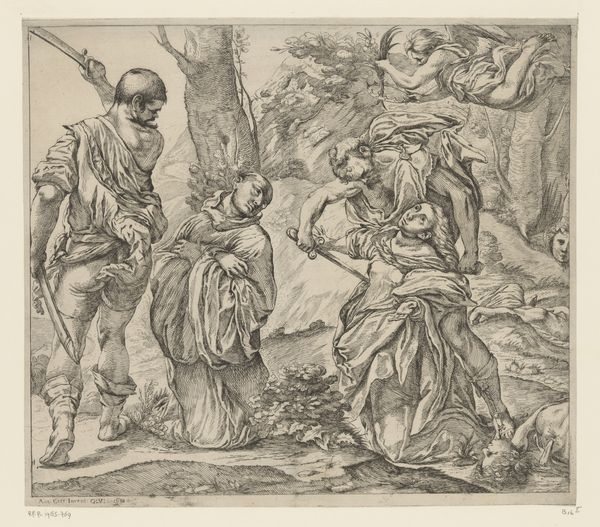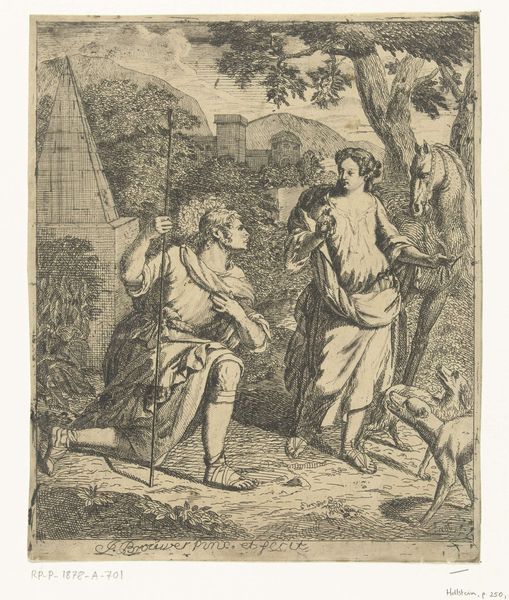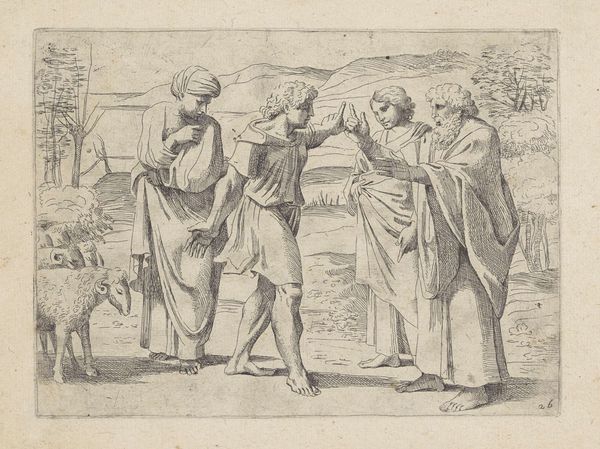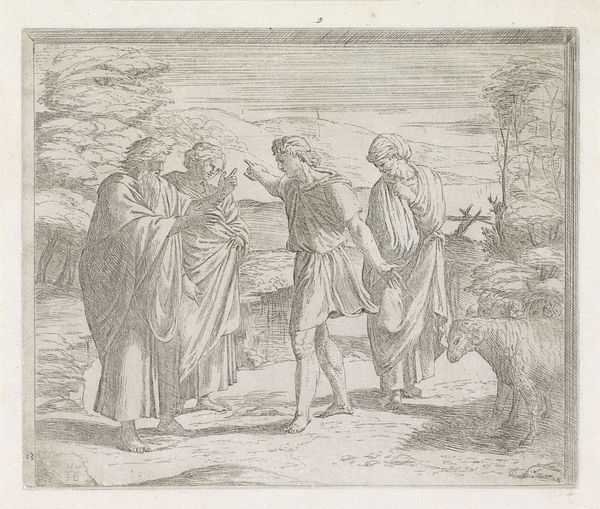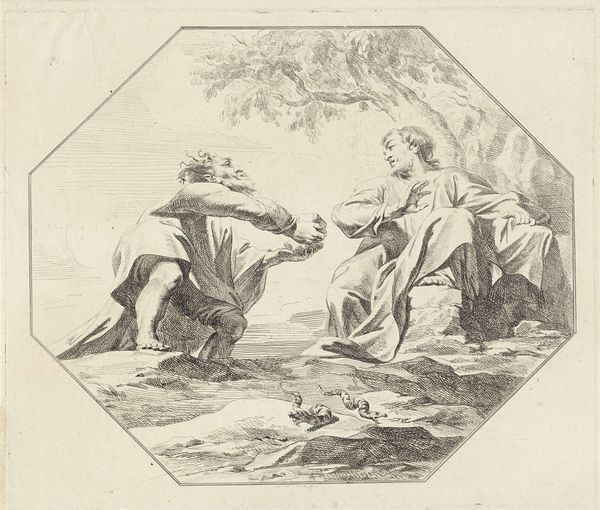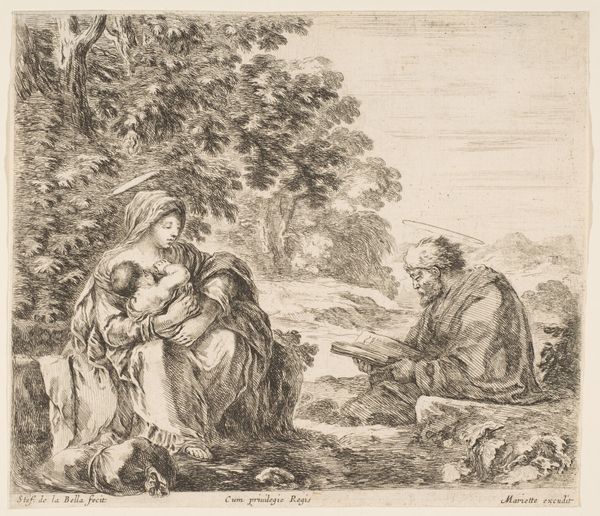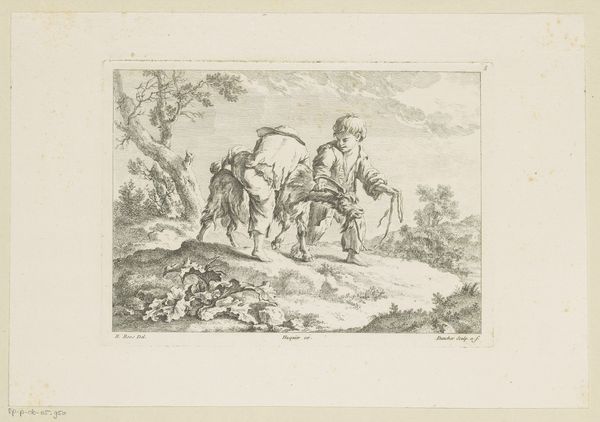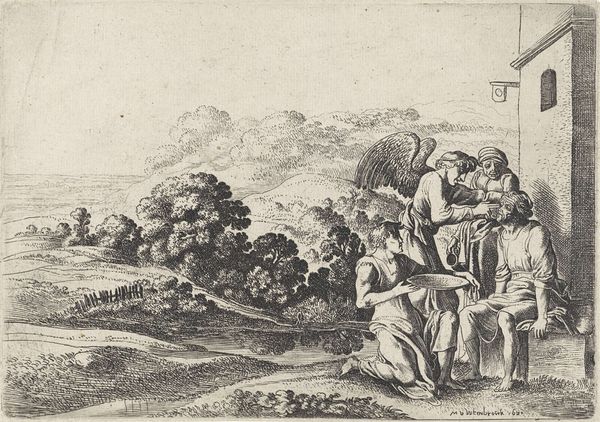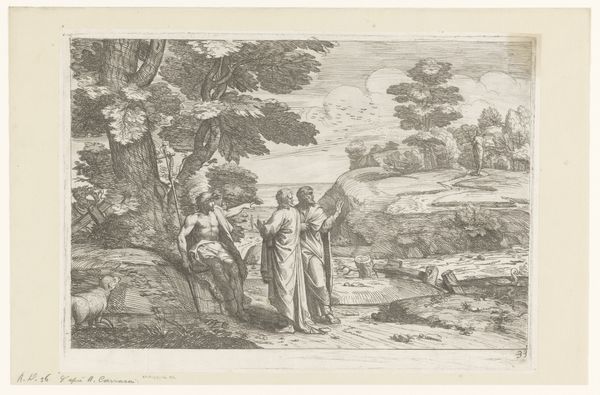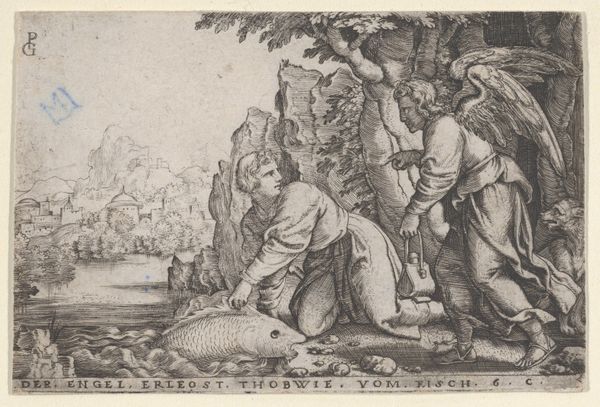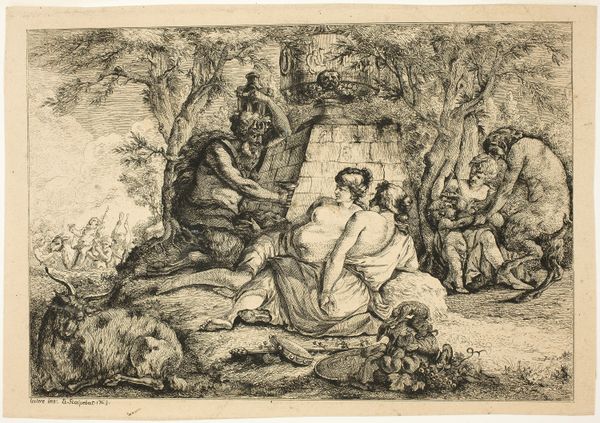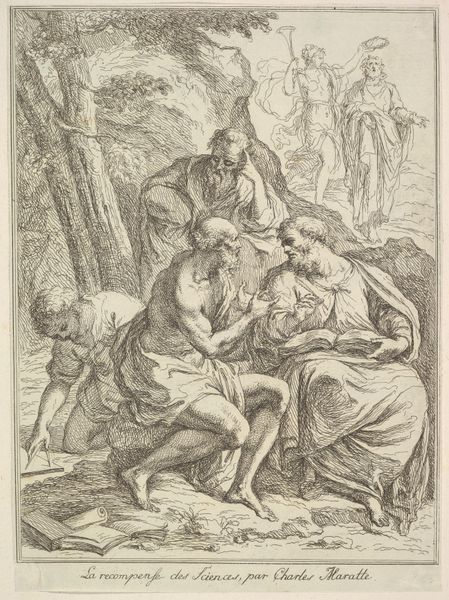
print, etching, engraving
#
allegory
#
baroque
# print
#
etching
#
figuration
#
line
#
history-painting
#
nude
#
engraving
Dimensions: height 133 mm, width 179 mm
Copyright: Rijks Museum: Open Domain
Curator: Giovanni Lanfranco's "Creation of Adam and Eve," etched around 1607, presents a familiar biblical scene with an intriguing hand. What catches your eye initially? Editor: Well, aside from the rather stark composition, I'm struck by how tentative it all feels. The lines are fine, delicate even, as if hesitant to commit to this world-altering moment. There is something unresolved to it. Curator: It's fascinating you say that. Lanfranco was working within the Baroque style, a movement characterized by drama and intense emotion, but here we see a subdued presentation, perhaps reflecting the process of engraving. He carefully renders figures with line work and hatching. Do you find symbolic significance within that lack of intense movement, within the stillness? Editor: Absolutely. Consider the figures: God is imparting a part of himself and reaching for the newly formed Eve, Adam receiving life but seated, languid almost. Eve shrinks away from his touch. This image becomes not a celebration of divine power, but an exploration of emerging consciousness. These early humans are overwhelmed in a new and challenging place. The bareness of their figures amplifies a vulnerability, a deep well of fear, doubt, and apprehension that makes them so believably human and connected to our shared ancestry. Curator: Very insightful. The means of production, printmaking specifically engraving and etching allowed the mass distribution of ideas. The nude form, while celebrated in art for centuries was newly contested. Lanfranco’s "Creation" navigates these emerging debates, allowing for a more nuanced portrayal of the original sin and its creation story. Editor: So, the choice of medium underscores this era of cultural production; it gives the image life and breath within society at large. This then impacts how viewers might grapple with faith and creation, sin, sexuality, morality, and much else besides. A print lends itself to the distribution of not just imagery, but ideas at large. Curator: Precisely, this challenges our common views on dissemination of visual content, and that is especially true during this specific historic era. Editor: Indeed, a moment of spiritual formation becomes a catalyst for cultural questioning, all embedded within the artwork's inherent symbolism. I will keep that in mind as I continue my viewing of works from the era.
Comments
No comments
Be the first to comment and join the conversation on the ultimate creative platform.
